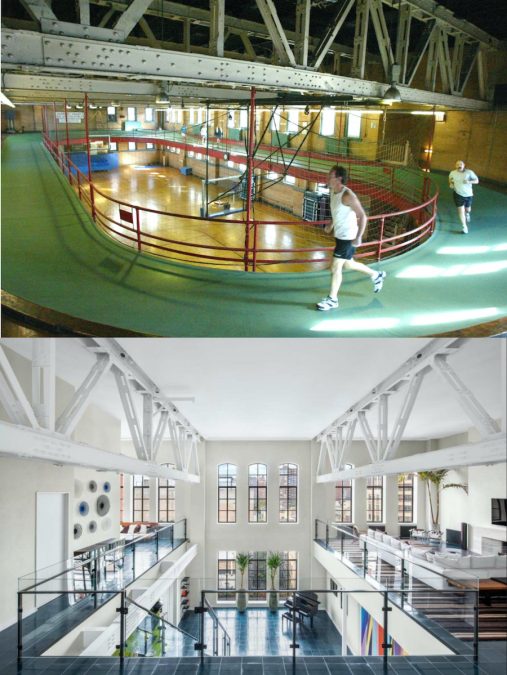Donald Trump’s Class War Against the Poor Helped Destroy the YMCA
There’s something deeply ironic about Donald Trump’s bizarre, pre-election “YMCA” video: You can no longer stay at the Village People’s YMCA in Manhattan, because the gentrification carried out by real estate barons like Trump drove out housing for poor people.

Donald Trump dances at the end of a rally at Carson City Airport in Carson City, Nevada on October 18, 2020.
Donald Trump’s last dance before the election was a bizarre one.
On Tuesday morning, he tweeted a surreal supercut of himself dancing (spasming?) to “YMCA,” an act that’s become his calling card on the campaign trail despite the objections of the Village People.
Many commentators have snarked about the juxtaposition of the nation’s top Republican official gyrating to the disco classic that’s been heralded as a gay anthem. But there’s an even deeper irony here: You can no longer stay at the Village People’s YMCA in Manhattan — and Trump is a big reason why.
“YMCA” was written from the perspective of the kind of weekend party people (often young gay men) who once used the Young Men’s Christian Association as a crash pad or a place to discreetly hook up.
But what’s often forgotten is that YMCAs were once an important source of affordable housing for the working class and the poor. The organization served as a refuge for itinerant men moving to the city from rural areas or immigrants looking for their first entry point into America. As the Village People themselves noted: “Young man, there’s a place you can go/ I said, young man, when you’re short on your dough.”
This wasn’t a unique feature. For the better part of a century, boarding houses and single-room-occupancy hotels (SROs) were everywhere in America. At their peak, around 1900, between one-third and one-half of city dwellers boarded or took boarders, according to one estimate by scholar Paul Groth.
The demographics at YMCAs began to change in the mid-century, as many white men left due to a combination of the post–World War II economic boom, suburbanization, and white flight. Soon, the YMCA began serving more black men arriving from the South during the Great Migration and more homeless and destitute men.
Due largely to racism, the drive for profit, and the demonization of the poor by urban elites, SROs began to slowly vanish. In the 1950s, New York City banned the construction of new SROs while other cities targeted them for urban renewal demolitions.
Enter Donald Trump.
During New York City’s fiscal crisis in the 1970s, Trump was at the forefront of the rich’s class war against the poor. He used the downturn for his financial gain by acquiring land and buildings at fire-sale prices — starting with the shady redevelopment deal for the Commodore Hotel (it cost New York City about $360 million in uncollected taxes, according to the New York Times) — and set the stage for a new wave of luxury developments.

Trump and others constructed upscale hotels and apartments that served Wall Street and finance-related industries, accumulating fortunes during the Ronald Reagan years. Thus began the wholesale gentrification of Manhattan.
As property values skyrocketed throughout the late ’80s and ’90s, many of the remaining SROs in New York City were sold, and the YMCA closed many of its residences while rebranding as a family-friendly gym for the middle class.
In 1987, the New York YMCA still had four thousand rooms in ten Y facilities. As of last year, it was down to 1,200 rooms in five.
The iconic, century-old McBurney YMCA building in Chelsea, which made a guest appearance in the Village People’s video, was sold back in 1999. A few years later, the old Y was redeveloped as — yes — luxury condos, including this ridiculous $14 million duplex that once housed the YMCA’s gym and running track.
It’s Trump’s gilded vision of New York in a nutshell: cheap communal space for $80 to $120 a week for the poor transformed into multimillion-dollar apartments with public basketball courts, running tracks, and swimming pools for the rich.
It may have been fun to stay at the Village People’s YMCA. But we’ll never know.